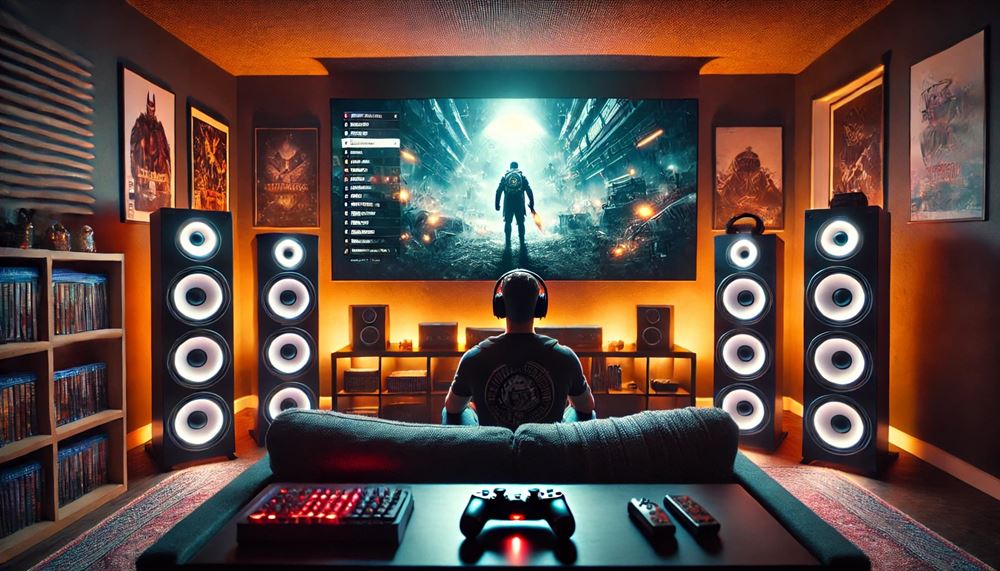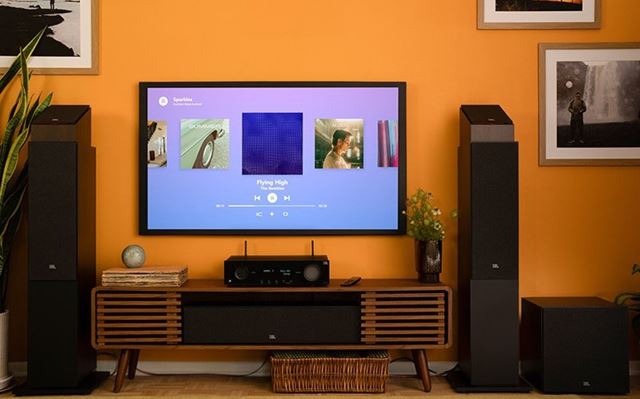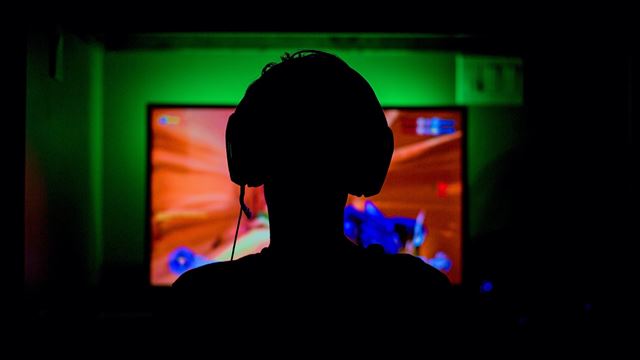|
|
The Immersive Power of Sound: Why Audio is Key to Gaming Realism9/30/2025
Alan Davidson shares insights into how JBL is shaping the future of audio, integrating cutting-edge technologies like Dolby Atmos, and ensuring that sustainability is a core focus in product development.
|
Alan Davidson, European Sales Manager at Harman International, sat down with us to discuss the future of audio in the gaming world and beyond. As technology evolves, the demand for immersive experiences continues to rise, and JBL has been at the forefront of delivering high-quality sound. In this interview, Davidson shares insights into how JBL is shaping the future of audio, integrating cutting-edge technologies like Dolby Atmos, and ensuring that sustainability is a core focus in product development. He also dives into the growing importance of audio in gaming and how the company is responding to the needs of audiophiles, gamers, and entertainment enthusiasts alike.
Why is good sound so important for video games?
Just like in any real music system, the goal is to recreate reality. For example, if you're in a game where you're being hunted, followed, or entering a building, you want to feel like you're really there. You want to hear the ambience of an empty warehouse or the sounds of the jungle—the rustling leaves, the trees, and the wind blowing around you.
The same applies to gameplay—you need to hear if someone is approaching from behind. The details, like footsteps in the undergrowth or movement in another room, are crucial. High-quality sound is just as important in a game as it is in music because it enhances realism. And the more real it feels, the more immersed you'll be in the game.
PC gamers are quite a niche group because they always strive to get the best experience possible. But for mainstream gamers, especially console players, the focus on high-quality sound really emerged with this generation of consoles. Have you noticed a growing demand for high-quality audio in gaming in recent years?
Yeah. We've just developed a whole new range of JBL receivers, and our design concept was centered around gamers using Xbox and PlayStation. You can actually see this reflected in the product design—the white finish aligns with the PlayStation aesthetic, while the underlighting, for example, shifts to green for Xbox. We did this intentionally because we know that whether you're gaming, listening to music, or watching a film in your bedroom or living room, your JBL AV receiver is likely sitting next to an Xbox, a PlayStation, or maybe even a PC.
Were there any specific design choices you made to attract gamers to JBL?
Yeah. As I mentioned, one key aspect is that modern games now feature full Dolby Atmos-encoded soundtracks, just like in the movie industry. Many younger customers use their gaming machines not only for gaming but also for watching movies and listening to music. So we kept that in mind when designing our products.
How is JBL integrating new 3D audio and spatial technologies into its products?
Yes, absolutely. One of the key features of the new JBL receivers is Atmos. The whole concept of Atmos is not just about steering audio from left to right or front to rear—it’s also object-based. With a Dolby Atmos soundtrack, you can place a sound anywhere in the 3D space of the room you're in.
It then comes down to the sound engineers—where will they place that particular piece of audio? That’s the first step. The next step is being able to accurately recreate it, which requires a high-quality processor. That’s where JBL excels—we use top-tier Dolby Atmos processing to ensure the most immersive experience possible.
How does JBL balance catering to the needs of audiophiles, movie enthusiasts, and gamers?
With this new range of receivers, we're approaching all users equally. We recognize that it's no longer just about the audiophile or someone who only watches movies—people now consume audio and video from so many different sources. Our goal is to design products that sound great regardless of the source.
What we’ve done is tailor the product’s design to create an association with different user groups. For example, the white finish or green underlighting subtly connects with gamers, but the core audio performance remains excellent for everyone.
How does consumer feedback influence the development of new JBL products? And regarding this new line, were there any insights from the gaming community?
Yes, absolutely. We’ve taken a broad approach, carefully analyzing how consumers interact with our products. That’s why we introduced the MA310 and MA510 series—MA stands for "Modern Audio." Our goal was to design these receivers with a modern perspective, ensuring ease of use without compromising performance.
One example is the remote control. We didn’t want to overwhelm users with something overly complex or intimidating. Instead, we designed it so you can pick it up and intuitively understand how to use it right away.
The same philosophy applies to the front panel of the receiver. The buttons are streamlined to provide only what you need—nothing overly complicated—while still delivering the best possible audio experience.
Gamers are often quick to invest in high-end hardware, like a new €1,000 graphics card every few years. But how do you convince them that high-quality (and sometimes pricey) sound is just as important for the gaming experience?
Well, there’s an old saying: garbage in, garbage out. If you start with a poor signal, it’s very difficult to improve it. That’s why having a good source is always the first place we recommend investing. However, it’s also about balance—building a well-rounded system where the source, amplification, and speakers complement each other.
It doesn’t matter how much you spend; what matters is ensuring your system is balanced. There's no point in having amazing speakers without an amplifier capable of driving them properly, just like there’s no point in having a powerful amplifier paired with small, underwhelming speakers. Even details like cabling contribute to the overall experience.
I’m not an expert on graphics cards, but I imagine it’s a similar concept—you don’t want to overspend in one area while neglecting another. Whether your audio source is a console, PC, CD player, streamer, or turntable, what really matters is the experience.
At the end of the day, entertainment is about relaxation and enjoyment. We all have busy lives, work stress, bills to pay—but we also need ways to unwind. In the UK, we say you should eat five fruits and vegetables a day to stay healthy. I like to add to that: listen to five great tunes a day to keep your mind healthy. Whether it’s music, movies, or gaming, if it helps you switch off from the stresses of everyday life, then that’s a fantastic thing.
This is a cliché, but it’s a good one, so I’ll ask it anyway. Where do you see the future of audio heading in the next five to ten years?
Wow. Well, first things first—will there still be music in the next five to ten years? Probably. No, actually, I’m pretty sure there will be. Now, whether it’s music you like, I can’t guarantee that!
Music is timeless. I’ve been listening to tracks from different genres and eras today, and no matter when or where they’re from, they can bring a smile to your face and trigger memories. That’s never going to change. You’ll always associate key moments in life with music—whether it’s your first dance at a wedding or… well, I won’t get too graphic, but you get the idea.
As for how we listen to music, some things will always remain. You’ll need an amplifier, and you’ll need speakers. But the source? That’s the wildcard. Formats evolve—people once said Vinyl was dead, and now it’s made a huge comeback. Cassette tapes? Those are pretty much gone. Beta, VHS—outdated. Now we stream everything—YouTube, Netflix, Sky, digital platforms.
The real driving force behind change will be internet capacity. As broadband speeds and network capabilities improve, that’s where the future of audio will head. In ten years, who knows? 3D holographic concerts? More advanced recreations of stadiums and concert halls? What matters most is that audio continues to bring joy. As long as we’re putting smiles on people’s faces, the future is looking pretty cool.
As sustainability becomes more important in consumer electronics, how is JBL incorporating eco-friendly practices in the development of its products?
Brilliant question. Absolutely brilliant. So, first of all, thank you. Do we have half an hour?
One of the things we’ve recently done is make a significant conscious decision to eliminate plastics from all of our packaging. So, there’s zero plastic in any brand-new product coming out of Harman. We’ve also eliminated printed manuals that used to require a tree—because we needed every language in the world printed, or at least it felt like it! Now, you can access those online, and we just provide a quick start guide.
We’re using soy ink on all our packaging, making it easier to recycle. We're also exploring how we can save energy in amplification. Digital amplification designs will reduce heat and dramatically cut power consumption. Actually, MA is the first product line that uses this new digital amplification.
Just like cars are moving towards hybrid technology, the same thing is happening in the audio world. We've already started, and Harman has a strong mission statement: we want to do our very best to move towards sustainability. I don’t know if we’ll ever fully reach net zero—that's above my pay grade! But our plan is to strive to make significant progress.




